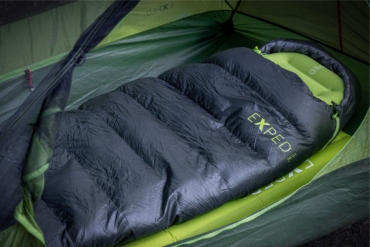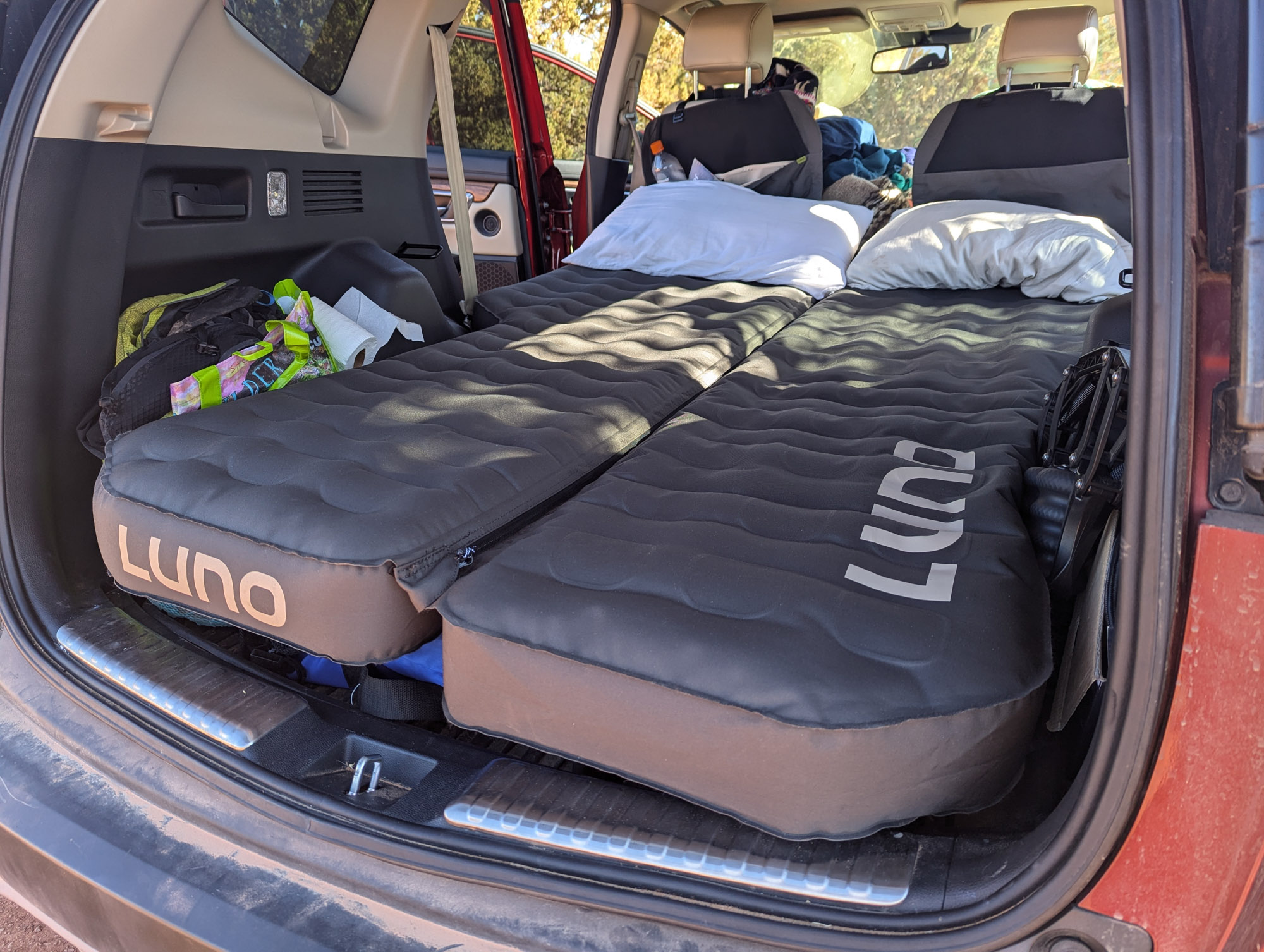Patent-pending FeatherCore insulation closes the gap to down in the NEMO Kyan 35 Synthetic Mummy sleeping bag.
Synthetic insulation continues to gain on the warmth-to-weight ratio and compressibility of down. NEMO joined the fray by releasing the Kyan men’s and Azura women’s synthetic mummy bags in January.
With these bags, the brand debuted FeatherCore, a patent-pending insulation technology.
FeatherCore uses PrimaLoft Silver (70 percent post-consumer recycled material) in a way that reduces airflow to improve heat retention. Impressively, NEMO advertises it having the same compressibility as 650-fill-power down.
To test NEMO’s claims, we used the Kyan 35 in temperatures near its rated limit on an overnight backpacking trip for a first look review.
In short: NEMO FeatherCore introduces another contender in the premium synthetic insulation battle. The Kyan 35 proved warm and comfortable while matching the weight and compressibility of many 600/650-fill-power down bags of the same temperature rating. The Kyan also inherits NEMO’s Thermo Gills, allowing heat venting without drafts while retaining synthetic’s ability to retain loft when wet. As a bonus, a zipped pocket near the head of the bag fits a cellphone.
NEMO FeatherCore Insulation
NEMO remains secretive about how it uses Primaloft Silver synthetic insulation in its FeatherCore bags. At press time, this is the only information GearJunkie could garner:
“Patent-pending FeatherCore construction suppresses airflow to increase heat retention and increases compressibility for a packed size similar to down.”
NEMO Kyan 35 First Look Review
Size & Weight
The Kyan indeed packed down small — 7 inches in diameter and 13 inches in length in the included compression sack. And I managed to squish it into a 7 x 7-inch space within my pack. In fact, this compressed size proved equivalent to — or smaller than — 650-fill down mummy bags in my quiver.
Still, at a verified 1 pound 10 ounces (regular length), the Kyan 35 weighs more than my 800-plus-fill-power down bags of similar temperature rating. But it does weigh less than my other 650-fill-power down bags.
Fit & Comfort
The cut is what I expect in a synthetic bag vying for down-like weight. It has 62-inch shoulder girth, 55-inch hip girth, and 45-inch knee girth. These dimensions weren’t excessive or tight anywhere for my 6-foot, 165-pound frame in any sleeping position.
Plus, the Kyan was quick to warm up in temperatures near its 35-degree rating. With a light base layer, I slept comfortably with the bag completely zipped, Thermo Gills closed, and the parka-like hood cinched.
The hood fits snugly without bunching or causing the breaches that some hoods generate when cinched. As such, I prefer this hood design over almost all others. The Kyan’s glossy 20-denier ripstop nylon shell and 30-denier nylon taffeta lining gave a soft feel. And the inner lining felt comfortable against both bare skin and base layers.
The Thermo Gill vents on the Kyan are unique. They do vent heat, but in my experience across two NEMO bags, the effect is limited to the area directly beneath the Gills. But a pair of 22-inch zipped openings allowed heat to escape between insulating baffles with only a doubled liner layer intact to fend off drafts.
Finally, like other ultralight fabrics, I was careful to only pack and unpack the bag inside the tent to avoid snags and punctures. And the insulated draft tube’s stiffener kept main zipper snags at bay.
Conclusions
The NEMO Kyan 35 with FeatherCore insulation is a viable alternative to 650-fill-power down bags of the same temperature rating. It requires less weight while offering similar compressibility, all with the advantage of better loft retention in humid and wet conditions.
The Kyan’s Thermo Gills provide a heat venting option around the torso, and the hood design is excellent. Both male (Kyan) and female (Azura) styles are available in both regular and long versions, and in 20- and 35-degree ratings. Prices range from $200 (35-degree regular) to $240 (20-degree long).











